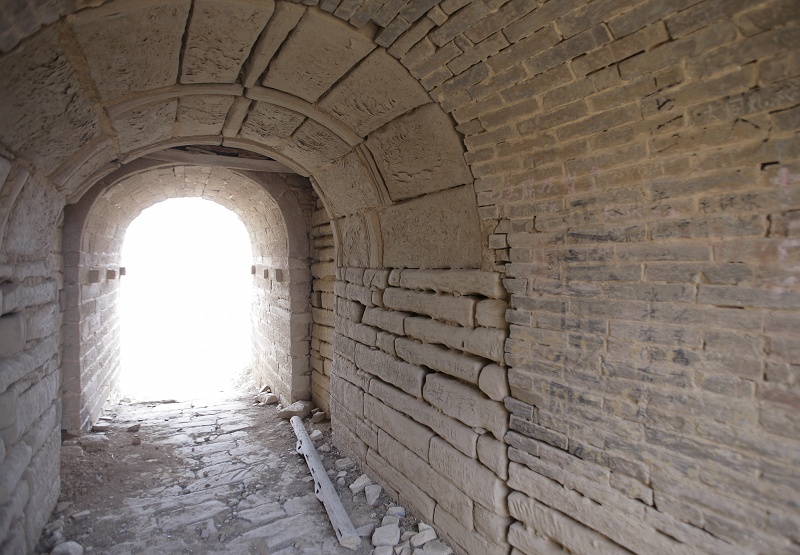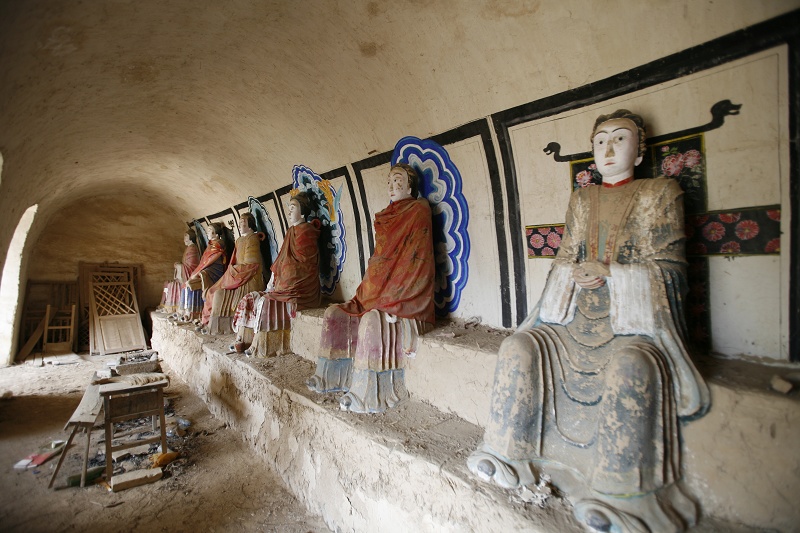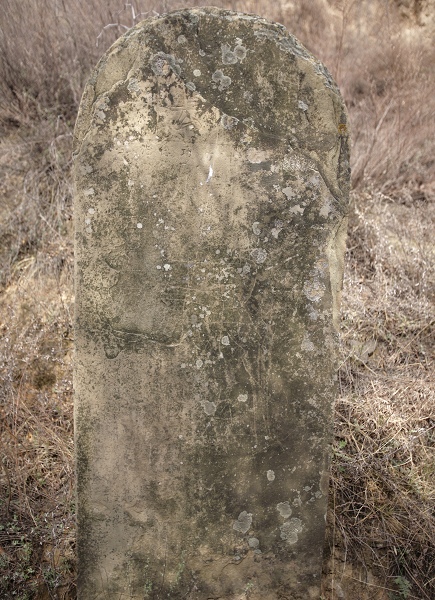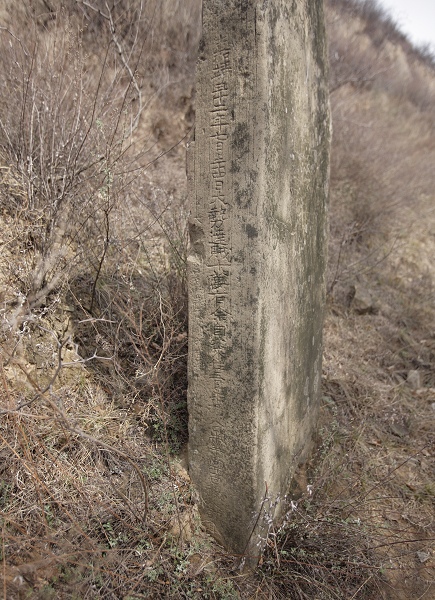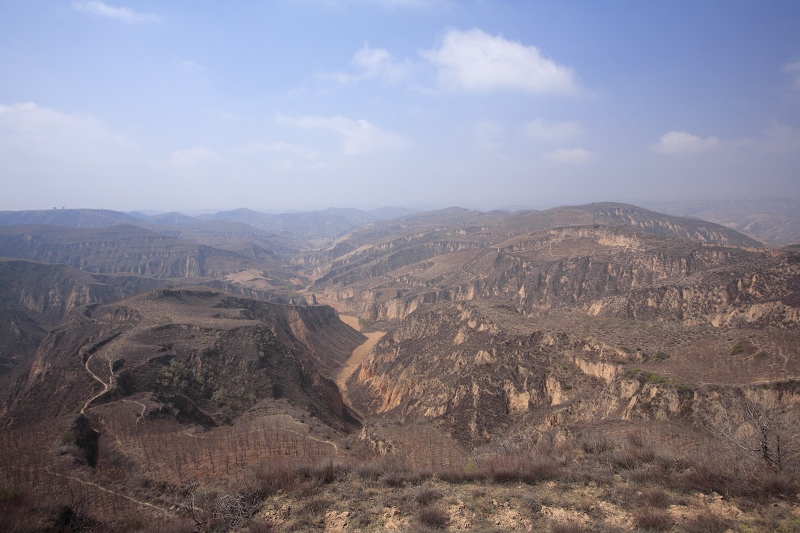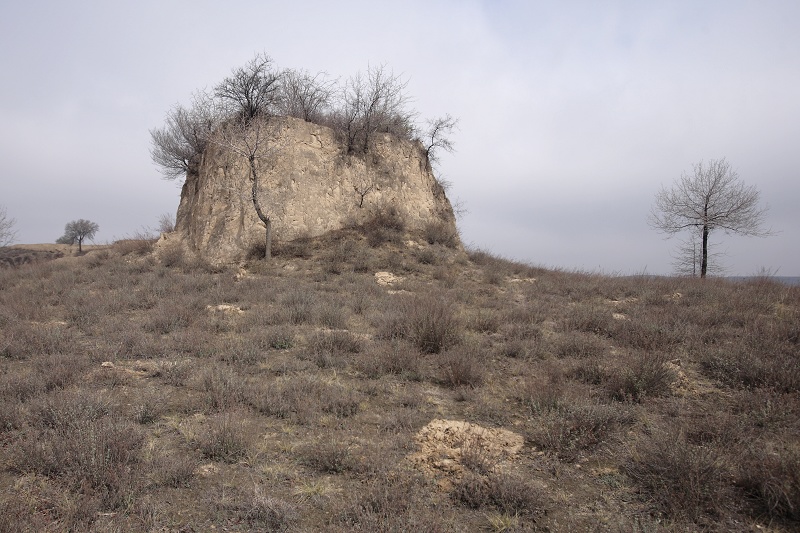寻找陕北雁门关
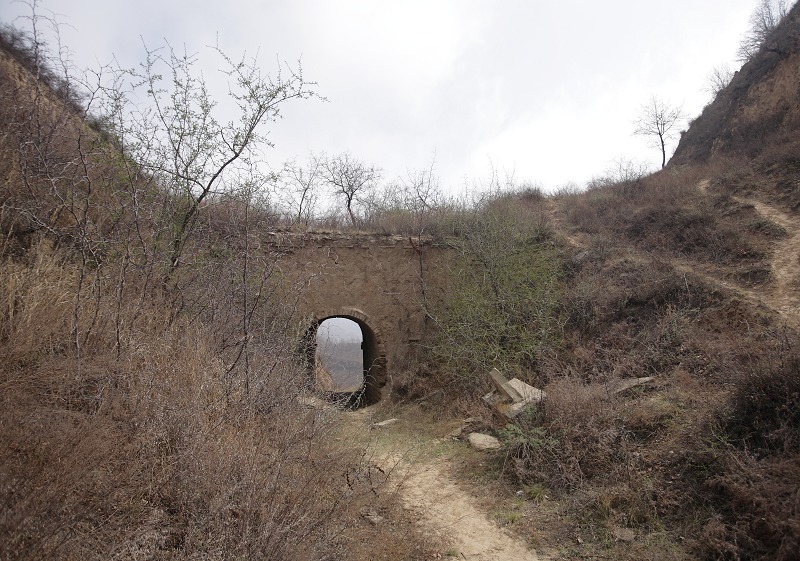
从南向北看雁门关关门
寻找陕北雁门关
撰文:李炬 摄影:李炬
In Through Shên-Kan, between December 16 and 17, 1908, the Clark expedition stayed two nights in Majiagou, six miles west of Yanchuan County; departing on the 18th, they passed Wenan Yi, Yuju, Tuojiacha, Yanmenguan Pass, Luojiawan and stayed in Gangu Yi in Yanshui Valley.
Yanmenguan Pass, mentioned here, is not the well-known Yanmenguan Pass in Daixian in Shanxi, but the less well-known one in the mountains of northern Shaanxi. It is located in the southwest of Yanchuan, at the junctions of Yan’an, Yanchuan and Yanchang, 1,251 meters above sea level and on the watershed of the Xigou River, a tributary of the Yanhe and Xianhe rivers.
In my three explorations of Yanmenguan Pass, I only successfully completed the trip once.
According to the “History of the Ming Dynasty”, “Annals of Yan’an Fu” and “Records of Place Names in Shaanxi Province”, the pass was built in the Tang Dynasty, initially being named the Heling Guan Pass and then renamed Heyuguan Pass in the Song and Yuan Dynasties. In the 30th year of the Ming Jiajing period (1551), it was rebuilt and the name changed to Yanmenguan Pass, also known as Chantiling. It was an important gate on the ancient post road from Xi’an to Yulin in the Ming Dynasty and a strategic pass from Gangu Yi to north Wenan Yi.
The Chantiling Pass is like a funnel. There is an abandoned path northwards, leading in the direction of Wenan Yi and to the south are two roads, one leading southwest towards Tangping village in Gangu Yi and the other in the direction of Yanchang. Now, the G210 national highway from Gangu Yi passes through the Lucao Liang tunnel and directly connects with Wenan Yi. Therefore, the ancient post road and Yanmenguan Pass have retired from regular use. My first exploration of Yanmenguan Pass was in March 2009, and when I drove to the foot of the hill, I discovered the road was blocked by tree trunks and jujube tree branches. I attempted to clear the way and then suddenly a few howling dogs were running towards me and I had to abandon the effort.
One month later, on April 11, I made my second trip. Having learned my lesson, I specifically invited Su Jianguo, a member of my host family in Gangu Yi to be my guide. He had been to Yanmenguan Pass when he was young, though had not been back for many years. When we arrived, the road at the foot of the hill was still blocked. Su got out of the car and removed the branches while, in thoughtful silence, the dogs observed us from a distance. I decided they only knew how to bully strangers! Later that year in September, when I went there with the CCTV film crew, we failed to reach the top because a large area was now blocked with loess landslides. So in my three explorations, this was the only occasion I successfully completed the trip. Driving along the dirt road, we wound our way up to the plateau, which is about 240 meters in elevation; a few forks had appeared on this winding and narrow mountain road but Su’s experience prevailed and we were able continue in the right direction without any detours. My watch showed 10:30 as the road ended and there the mist in front of us was Yanmenguan Pass and two beacon towers, just a short walking distance away. It had rained the night before and there were a few scattered clouds remaining. Watching them drift above us, the flowers and trees occasionally darkened by their shadows, it was as if we were in distant and magical land.
Among the ruins in the pass is the Chantiling Tunnel, nearly three meters high, two meters wide, and eleven meters in length, and resembling a deep gate. There are two cone-shaped, rammed-earth beacon towers on its southeast and northwest sides, about 260 meters apart. To the southeast of the tunnel is the rectangular shaped Yanmenguan Pass. The wall of this pass is also rammed-earth loess and the residual height exceeds one meter.
Statues of seven goddesses are enshrined inside the Kangzheng temple.
There is a brick arch in the west wall, about two meters in height, width, and depth. Here is Kangzheng Temple, also known as Shamen Temple, founded in the Ming Dynasty, now covered with overgrown weeds and the home of scurrying rabbits. Inside the temple are enshrined the once worshipped statues of seven goddesses.
A stone tablet from the Ming Dynasty rests on one wall. The script is blurred and vaguely reads as six edicts by theEmperor Zhu Yuanzhang: filial piety to parents; respect for the elderly; harmony with colleagues; education of descendants; management of one’s life; good behavior. There are a few other stone inscriptions from the Ming and Qing Dynasties but most of them are damaged or weathered and have undecipherable text.
I spent two hours looking around the ruins and enjoying the sunny day; the trip had been really worthwhile. It was the Clark expedition that had led me to this place — and all because a hundred years ago they twice passed this way. Unfortunately, I could not find any original photos from here. Perhaps the weather was too cold; the lowest temperature measured at 7:00 a.m on the morning of December 18, 1908 in Majiagou was 11.5 ° F (-11.4 °C). They had covered 40 kilometers over the mountains in one day. Some pheasant were observed and thirteen pigeons were shot. It was possible, of course, that they did not take pictures.
The second occasion they came here was on August 26, 1909, on their return journey. They left Gangu Yi in the morning arriving at Majiagou in the evening. The distance they covered and the places they stayed at were exactly the same as their outward journey in winter. However, this time it was the height of summer: a mule fell dead because of the intolerable heat. Only one photograph has been found of that day, “Hillside with temple” (the picture and a detailed description can be seen in Chapter Four, p. 221).
There are several beacon towers standing on the top of the hills around the site of Yanmenguan Pass. Among them are Lüjiahe beacon, Tuojiacha beacon and Fanjiagou beacon in the north; Shijiahe and Luojiawan beacons in the southwest, their positions paralleling the ancient post road. On September 3, 1991, the historical sites of Chantiling Tunnel and the ancient Yanmenguan Pass were announced as key protection areas by the People’s Government of Yanchuan County.
It is worth noting that originally the only way to the area was on foot. Now, a wealth of oil reserves has been discovered underground in the area of Yanmenguan Pass. A new road has been built and a work site constructed. In the near future, there will no longer be quietness here. With rows of pumping units (known as “kowtow machines”) working around the clock to extract their underground treasure, the heritage conservation policy will face tremendous pressure.
[ Top ]

